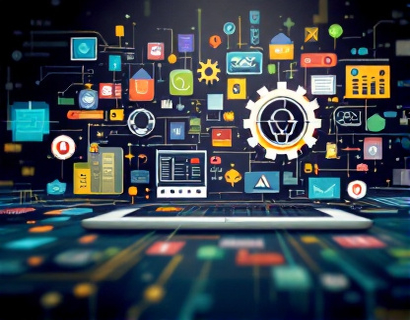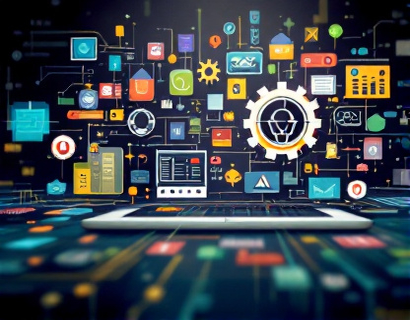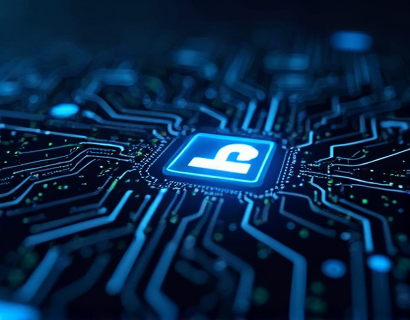Seamless AI and Blockchain Integration: A Business User's Guide to Digital Transformation Success
The integration of Artificial Intelligence (AI) and blockchain technology represents a pivotal shift in the digital landscape, offering businesses unprecedented opportunities for efficiency, security, and innovation. This guide is designed to provide business leaders with essential strategies and insights to navigate the complexities of merging these two transformative technologies. By understanding the synergies between AI and blockchain, companies can drive successful digital transformation, unlock new growth opportunities, and maintain a competitive edge in an increasingly tech-driven world.
Understanding AI and Blockchain
Before delving into the integration strategies, it's crucial to grasp the fundamental concepts of AI and blockchain. AI refers to the simulation of human intelligence processes by machines, particularly computer systems. These processes include learning (the acquisition of information and rules for using it), reasoning (using rules to reach approximate or definite conclusions), and self-correction. AI technologies such as machine learning, natural language processing, and predictive analytics are revolutionizing industries by automating tasks, enhancing decision-making, and providing valuable insights from vast datasets.
Blockchain, on the other hand, is a decentralized digital ledger technology that records transactions across multiple computers in such a way that the registered transactions cannot be altered retroactively. This technology ensures transparency, security, and immutability, making it ideal for applications requiring trust and traceability, such as supply chain management, financial services, and identity verification.
Synergies Between AI and Blockchain
The true power of integrating AI and blockchain lies in their complementary strengths. AI can process and analyze the vast amounts of data stored on a blockchain, extracting meaningful insights and patterns that would be impossible for humans to discern manually. Conversely, blockchain provides a secure and transparent environment for AI algorithms to operate, ensuring data integrity and trust in the outcomes generated by AI systems.
One of the key synergies is in the area of smart contracts. Smart contracts are self-executing contracts with the terms of the agreement directly written into code. When combined with AI, smart contracts can automate complex business processes, execute transactions based on predefined conditions, and ensure compliance with regulatory requirements. This automation not only reduces operational costs but also minimizes human error and fraud.
Enhancing Efficiency Through AI and Blockchain
Efficiency is a primary driver for businesses adopting AI and blockchain integration. AI can optimize business processes by identifying bottlenecks, predicting maintenance needs, and automating routine tasks. For instance, in manufacturing, AI-powered predictive maintenance can reduce downtime and maintenance costs by forecasting equipment failures before they occur. Blockchain can further enhance this by providing a transparent and immutable record of maintenance activities, ensuring accountability and traceability.
In supply chain management, AI can streamline operations by optimizing routes, predicting demand, and managing inventory levels. Blockchain ensures that all transactions and movements within the supply chain are recorded accurately and transparently, reducing the risk of fraud and errors. This combination leads to faster, more reliable, and cost-effective supply chain operations.
Boosting Security with AI and Blockchain
Security is a critical concern for businesses in the digital age. AI and blockchain together offer robust security measures that can protect sensitive data and prevent cyber threats. AI can detect and respond to anomalies in real-time, identifying potential security breaches and mitigating risks before they materialize. Machine learning algorithms can analyze patterns and behaviors to predict and prevent attacks, enhancing the overall security posture of an organization.
Blockchain's inherent security features, such as cryptographic hashing and decentralized consensus mechanisms, ensure that data is tamper-proof and secure. When integrated with AI, the system can continuously monitor and adapt to new threats, providing a dynamic and proactive security solution. For example, in the financial sector, AI-driven fraud detection combined with blockchain's secure transaction records can significantly reduce the risk of financial crimes.
Fostering Trust and Transparency
Trust and transparency are essential for building strong business relationships and maintaining customer confidence. AI and blockchain work together to create an environment where data is verifiable and trustworthy. Blockchain's immutable ledger ensures that all transactions are recorded accurately and cannot be altered, providing a clear and transparent audit trail. AI can further enhance this by analyzing data patterns and providing insights that build trust among stakeholders.
In industries like healthcare, where data privacy and integrity are paramount, the combination of AI and blockchain can ensure that patient data is securely stored and accessed only by authorized personnel. AI can help in managing consent and access controls, while blockchain ensures that data modifications are tracked and verifiable. This level of transparency and security fosters trust among patients and healthcare providers.
Driving Innovation and New Growth Opportunities
The integration of AI and blockchain opens up new avenues for innovation and growth. Businesses can leverage these technologies to develop novel products and services that meet evolving customer needs. For instance, in the insurance industry, AI can assess risk more accurately by analyzing vast amounts of data, while blockchain can streamline claims processing and ensure transparency. This combination can lead to the creation of personalized insurance products and faster, more reliable claims handling.
In the realm of finance, AI and blockchain can revolutionize trading and investment processes. AI algorithms can analyze market data and make informed trading decisions, while blockchain can facilitate secure and transparent transactions, reducing the need for intermediaries and lowering transaction costs. This synergy can lead to the development of decentralized finance (DeFi) platforms that offer innovative financial services to a broader audience.
Challenges and Considerations
While the benefits of integrating AI and blockchain are significant, businesses must also be aware of the challenges and considerations involved. One of the primary challenges is the technical complexity of integrating these technologies. Both AI and blockchain require specialized knowledge and expertise, and businesses may need to invest in training or hiring skilled professionals to manage the integration process effectively.
Another consideration is the regulatory landscape. As AI and blockchain are relatively new technologies, regulatory frameworks are still evolving. Businesses must stay informed about relevant regulations and ensure compliance to avoid legal issues. Additionally, there are concerns around data privacy and the ethical use of AI, which must be addressed to maintain public trust.
Strategies for Successful Integration
To successfully integrate AI and blockchain, businesses should follow a structured approach. Here are some key strategies to consider:
- Assess Current Infrastructure: Evaluate your existing technology stack and identify areas where AI and blockchain can add value. Consider the compatibility of your current systems and the potential for seamless integration.
- Define Clear Objectives: Clearly define the goals and objectives of the integration. Whether it's improving efficiency, enhancing security, or fostering innovation, having a clear vision will guide the integration process.
- Build a Skilled Team: Assemble a team with the necessary expertise in AI, blockchain, and related technologies. Consider partnering with external experts or consultants if in-house skills are lacking.
- Start Small: Begin with pilot projects to test the integration in a controlled environment. This approach allows you to identify and address issues early on, minimizing risks and costs.
- Focus on Data Quality: Ensure that the data used by AI algorithms is accurate, complete, and relevant. High-quality data is crucial for the effectiveness of AI and blockchain integration.
- Monitor and Adapt: Continuously monitor the performance of the integrated system and be prepared to make adjustments as needed. The tech landscape is rapidly evolving, and staying agile will help you stay ahead.
By following these strategies and leveraging the synergies between AI and blockchain, businesses can navigate the complexities of digital transformation and achieve significant benefits. The key is to approach the integration process methodically, with a clear understanding of the technologies involved and a focus on delivering tangible value to the business.
Conclusion
The integration of AI and blockchain represents a transformative opportunity for businesses looking to thrive in the digital age. By enhancing efficiency, security, and innovation, these technologies can drive successful digital transformation and open up new growth pathways. While the journey may present challenges, a well-planned and executed integration strategy can lead to substantial rewards. As businesses continue to explore the potential of AI and blockchain, those who embrace this integration will be well-positioned to lead the way in the rapidly evolving tech landscape.










































